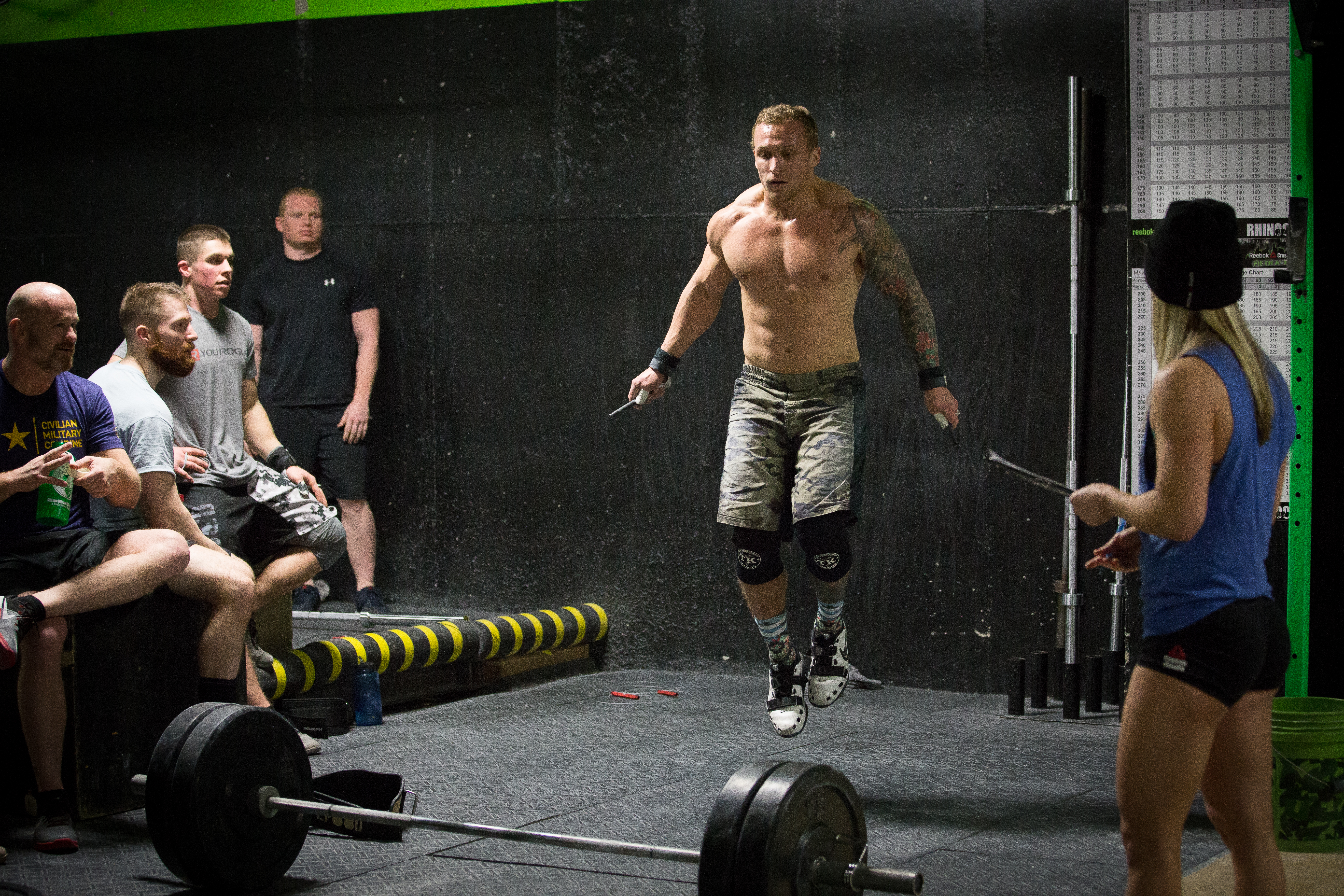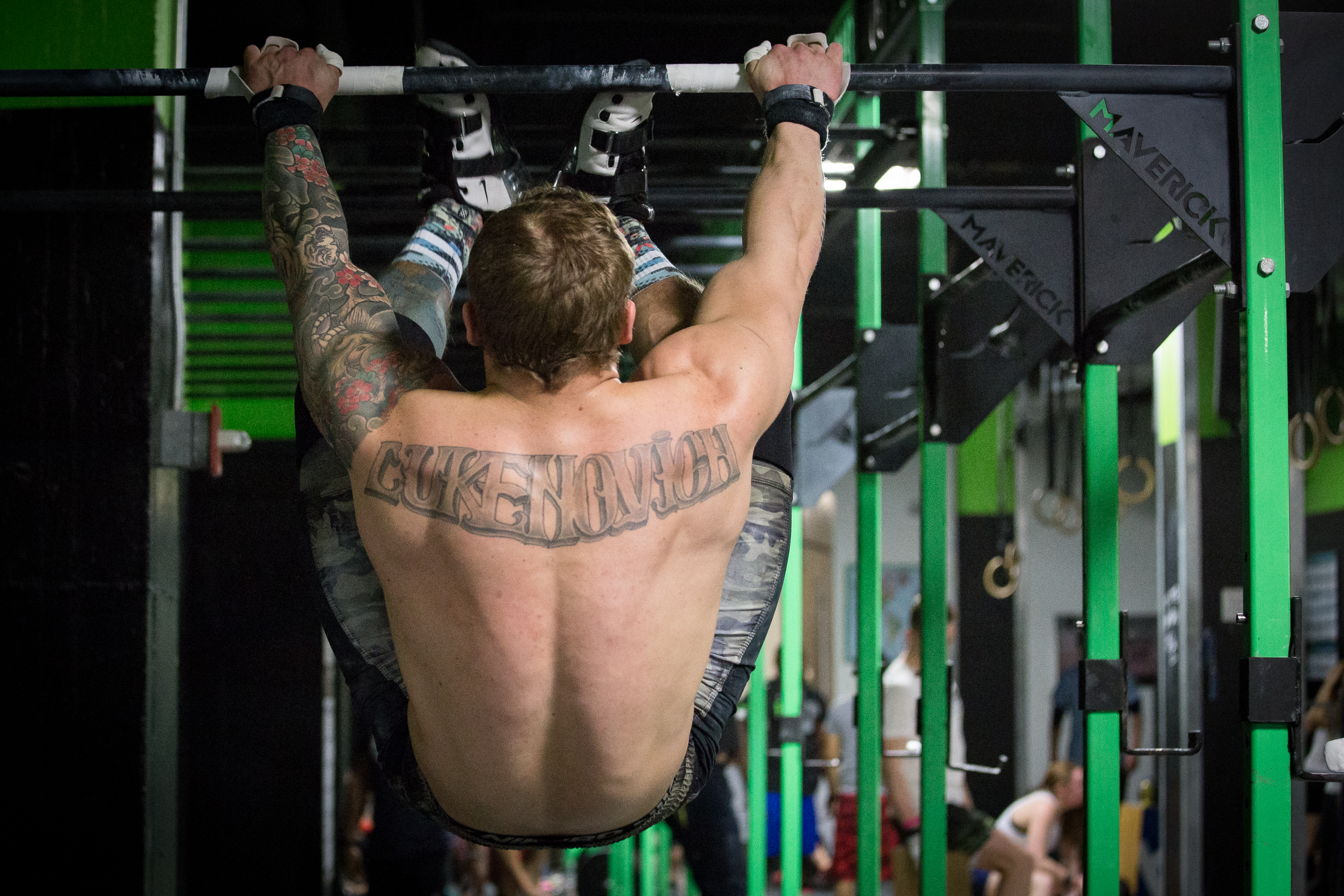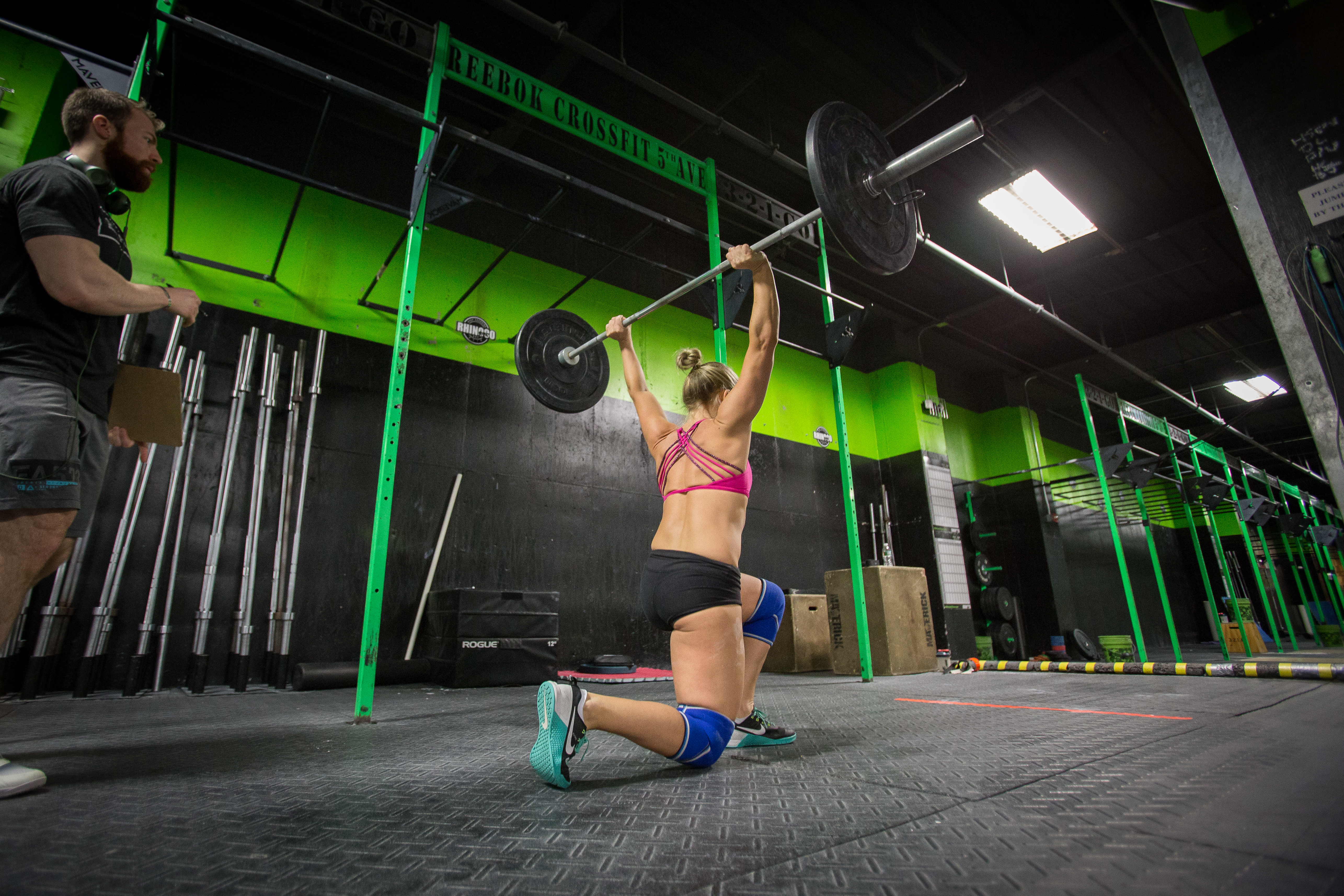Editors note: Katie Rose Hejtmanek, Ph.D. is a cultural anthropologist conducting research on the culture of strength sports in the United States. This is the fourth of an in-depth series introducing readers to her research and preliminary findings.
This is an op-ed; all observations, data, and opinions come from her own research. Read more from Katie Hejtmanek here.
“It hurts sooo good!”
My partner Vanessa tells me this after a CrossFit® partner workout. “I’d be in awesome shape if all of my workouts hurt like that.” I look around, and the majority of the class’s participants are lying on the floor, red faced, sweaty, without shirts, and breathing heavy. Everyone is exhausted; many people might be hurting so good.
In addition to hurting after a workout, I have learned about “dread,” as Sara calls it, before a workout. As I probed a little bit about this “dread,” wondering what she meant, I asked, could you describe it for me? Sara responds, “I think you’ll understand it when you start repeating workouts like Fran.” It wasn’t something she could explain to me, in order for me to understanding it; I had to feel it for myself, as I stepped to the barbell for Fran.
“It’s the panic, terror, horror you get before or in a workout when you know what you’re in for. Sure you could quit and walk away from the barbell but…you can’t really do that,” Brad tells me as he describes his feelings during functional fitness workouts.
“Butterfly pull-ups are all about the rhythm. And once you get them, you get them. You’ll be surprised.” Coach tells us as we practice a series of movements that comprise the butterfly pull-ups. Butterfly pull-ups are a skill. During metcons, regular pull-ups slow you down and tire you out. Therefore, the fast butterfly pull-ups are expected and desired. All of the skills in class have a technique, a rhythm to them, learned through practice, and, once mastered, part of a body movement skill set one can employ in workouts and competitions.
These feelings – this hurt, dread, terror, rhythm, and many others – are a serious and important part of the culture of fitness in this environment.
Culture Gets Inside Us
Anthropologists debate where culture is located. Is it out there in our architecture, in our public spaces, in our public displays – such as presidential debates or clothing styles? Yes, of course it is!
Is it inside of us? Does culture shape our feelings, the way we move, how we understand our bodies, or how we think and experience our selves? Yes, of course it does!
Scholars like Pierre Bourdieu and Michel Foucault have long argued that what we do on a day to day basis is cultural – what we eat, how we move (drive vs. walk; sit at computers all day), what we believe (that people don’t have to stand for a national anthem or they do) – and this cultural stuff becomes how we experience who we are as individuals. We “practice” these things every day and this practice is productive and meaningful. It produces our bodies, selves, and souls.
Practice often means training at something – a sport, the piano – but I want us to think about practice as much broader than that. It is what we do everyday in the world; it is the way we live all aspects of our lives. We become practiced to take the train and walk on particular sides of the stairwell. We become practiced in getting up at a certain hour or eating at our lunch hour and then we “naturally” awake or become hungry at this time. A lot of what we “practice” becomes “second nature” and sometimes we almost forget that we didn’t always do it.
My research focuses on how culture gets inside of us. I have studied how young men who live in a mental institution learn to interpret sensations in their bodies as “emotions” and then to share them with others. The culture of this mental institution was based on teaching these boys to recognize sensations in their bodies and to interpret them as various emotions such as fear, sadness, anger, anxiety, and excitement. As I observed group therapy sessions, I was awed by the nuance by which these 13, 14, 15 year olds could communicate the sensations in their bodies – their “feelings” in their bodies, their experiences of these sensations. They practiced interpreting these experiences as emotions and the culture got inside of them, including how they “felt.” Culture shapes our phenomenology of our bodies.
Phenomenology refers to the way we experience things, in particular our sensory experience. Here I mean to it to refer to the way CrossFitters experience CrossFit workouts through their bodies and feelings.
The Dread of Fran
One way that culture gets inside of CrossFitters is through the anticipatory feelings they get before very difficult workouts. As my informants mentioned above, it is the dread or terror before a workout, when you know what you are in for.
As I participated in my first Fran, I listened and heard folks talk about how difficult the workout was going to be. People were talking strategy – breaking up thrusters, breaking up pull ups. I interpreted this as a means to discharge the dread or panic they must have been feeling.
As someone new to CrossFit, the culture and the dread of Fran hadn’t become part of my lived, embodied experience. Instead, I began to feel nervous as I listened to everyone around me and wondered how my body would take to Fran. After I completed the workout (and hurt so good, see below), I reported back to Sara: I’ve done Fran. The next time I see it as the WOD, I anticipate I will feel dread. Because that is what happens, that is the practice – you do the workouts, you know what they do to your body and mind, and you learn to feel dread or terror when you know what you’re in for. This dread (or terror) is not cognitive only; it is experienced in the body.
Dread is a sensation – a raised heart rate, sweaty palms, or a churning stomach. Culture gets inside of you as you do it, as you practice it, and it manifests itself in the interpretation of bodily sensations.
The Hurt of Workouts
These workouts are extremely taxing on the body. Therefore, after a workout, it is customary to lie sprawled out on the floor of the box, red faced, sweaty, shirt off, and wiped out. This is the hurt after the workout. If you don’t feel this way, if you don’t hurt this way, then you didn’t go fast enough, try hard enough, or give it your all during the workout.
As Vanessa states it above, the workout hurts sooo good. This hurt means something. It means you pushed yourself, you worked really hard, you demanded your body move the weight and do the movements, and you finished the workout the way you are supposed to.
Part of the culture in the box is that workouts should hurt. And part of the culture is to interpret this hurt as good, as beneficial, as productive (similar to no pain, no gain logic). The phenomenology of this fitness culture is that this hurt should be A) what one feels after a workout and B) experienced as good.
You learn to dread Fran and experience the hurt after Fran as good.
The Rhythm of Butterfly Pull-ups
As a new participant in functional fitness, I have been exposed to a number of skills that are unique to the practice including, but not limited to, muscle ups, double unders, kipping pull-ups, and butterfly pull-ups. As the coach described above, butterfly pull-ups, and some of these others skills, are all about the rhythm. And once you get the rhythm, you get the skill.
Each athletic endeavor or sport includes a number of skills that when tried the first time are difficult to do, even if you are the most advanced athlete in another sport (just ask Von Miller who had to learn to dance). But the logic goes – if you practice, in the practice-a-sport kind of way, you will master them. I want to push this kind of practice further and to look at how this practice (of a skill) quickly turns into the ability to perform in new ways.
And in order to do this you have to train your body to feel a particular kind of rhythm doing a pull-up and to learn to execute this rhythm at a moments notice. Once we feel and then master the sensation of the butterfly pull-up rhythm, we’ve become better. Feeling this rhythm isn’t just about being able to do a butterfly pull-up; it is about becoming better at workouts.
CrossFit teaches us to feel our sensations and bodies in particular ways. This is its phenomenology. The culture isn’t just “out there” in the community or boxes or online forums. It is also “in here” in our bodily rhythms, experiences pain after a workout, and feelings before a workout.
Editors note: This article is an op-ed. The views expressed herein are the authors and don’t necessarily reflect the views of BarBend. Claims, assertions, opinions, and quotes have been sourced exclusively by the author.


